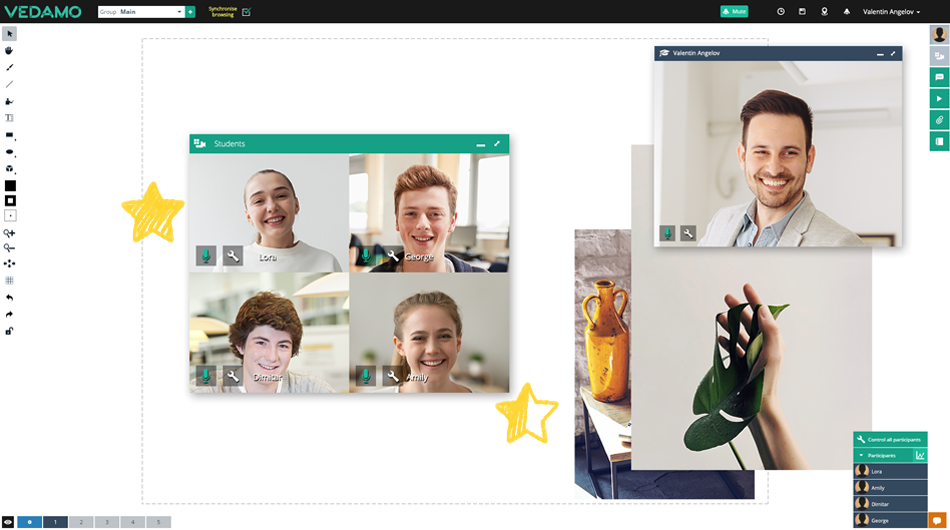Virtual classroom gamification: A correct rewards system is the main tool used to effectively manage students. It’s the same in games. How do game creators effectively manage the players? What is the game economy?
Game economy
The game economy is a rewards-based system. Game makers use it to effectively manage the behavior of players. We can use similar systems in the virtual classroom as well. The correct rewards system is an essential tool to effectively manage students. Rewards serve to motivate students to continue to more effectively take part in the learning process.
The game economy has two essential parts:
- Nature of the rewards
- Schedule for obtaining the rewards
Nature of the rewards
Each reward serves to create some type of positive emotion. The rewards need to comply with many factors, like the age and social status of the students. The rewards can be grouped into 4 categories.
- Things: These are rewards that are related to obtaining something. It can be material or immaterial. Classic immaterial things are the points and badges that we talked about in the previous post “Gamification in the Virtual Classroom – Game Elements.” In the traditional classroom we can give material things to students (for example, colorful candy for homework that is completed and submitted on time) by just handing them out. The question is whether or not we can give material rewards in the virtual classroom. Oh yes we can.
Don’t forget that e-learning is part of a new economy that is completely based on digital technologies.
Imagine that you have established a reward for the best essay.A good fit for this reward can be your favorite book. Just order the book, download the delivery code, and send it to the student who won the award. They will fill in the needed information and the electronic or hard copy version will be delivered to them, much like the invites that we receive for events.

- Self-esteem: These serve to honor a student. They create prestige and are a very good source of motivation. “DJ of the day” is an example of this type of reward in the virtual classroom. This reward involves giving the student the opportunity to choose a song with which the next class will start. Technological resources that systems like VEDAMO provide are exceptionally fitting for similar types of rewards.
If you work with adults (as I usually do), then examples of these types of rewards are recommendations in LinkedIn or certificates for completed courses.
- Social capital: These are rewards that aim to provide the students with more connections and memberships in groups. They are also an excellent source of motivation for adult students. For example, you can create a group with limited access to social networks in which you provide useful information about some field. To reward the successful completion a certain level, your students will receive an invitation to participate.
- Fun: These are rewards whose goal is to create entertainment. In the post “Gamification – Fun in the Virtual Classroom”, I described the different types of entertainment. For example, when you want to compliment a student, instead of saying the usual “Well done,” you can use the integrated media player to play a fireworks sound, which is a reward that causes surprise and entertains the students.

Schedule for receiving the rewards
The time at which the student receives their reward is very important for their motivation levels.
The time can be related to a certain task, such as:
- When starting a task: An example of this type of reward is a drawing to give away topics of tasks for homework. If you have prepared a few different topics you can organize a lottery. The student chosen by the drawing will choose the topic/task. In the virtual classroom we can take advantage of online generators of random numbers to draw the winner. This is a Self-Esteem reward.
- When a certain skill is obtained: An example of this type of reward is “In The News.” If you have a personal blog on the subject being taught (which I strongly recommend), then you can invite those students who have reached a certain level to share their ideas and to write a joint post. This is a Social Capital reward.
- When finishing the task: An example of this type of reward is described in “Gamification in the Virtual Classroom – Game Elements.” At the end of every lesson you can give a badge to the students who most successfully used the button for raising their hands. This is a Thing reward.

You can of course give a reward that is not linked to a particular task, but it will have a reduced motivational effect.
The schedule for receiving rewards can also be connected with some regular schedule:
- Expected rewards: An example of an expected reward is the certificate given for completing a course. Everyone expects to receive this at the end of the course. This is a Things category reward.
- Unexpected rewards: An example of an unexpected reward is to gift a well thought-out profile picture frame to your students. Then they can try to find something in common with a person who has the same profile picture frame. This is a Social Capital reward.
Practical examples in the virtual classroom
Morphing trophy: Put an image without any details or information about it onto the online whiteboard (this can be a picture of a person). You or a student then adds something to the image that reminds you or them of the student’s achievements throughout the course. This way, as the course progresses, the image on the whiteboard will acquire more details. At the same time, it will start resembling the students in different ways. At the end of the course you will have a terrific present for everyone. Prepare the image in a graphic file, add your letter to the students, and send the file to everyone.
This is a complex reward. It is entertaining, creates a feeling of prestige, and falls into the expected rewards category at the end of a course. It works well with all ages and social statuses. You can start with a picture of a person, an office, or even a blank slate. Everyone who’s rewarded will add something that they find interesting or entertaining.
What’s next?
A game has a point only if it has players. The entertainment, the rewards, and the gained points have a purpose only if there are teachers and students. That’s why in the next post we’ll talk about the players.
In the game called education there’s one very important rule: There are no favorite subjects, there are only favorite teachers.
